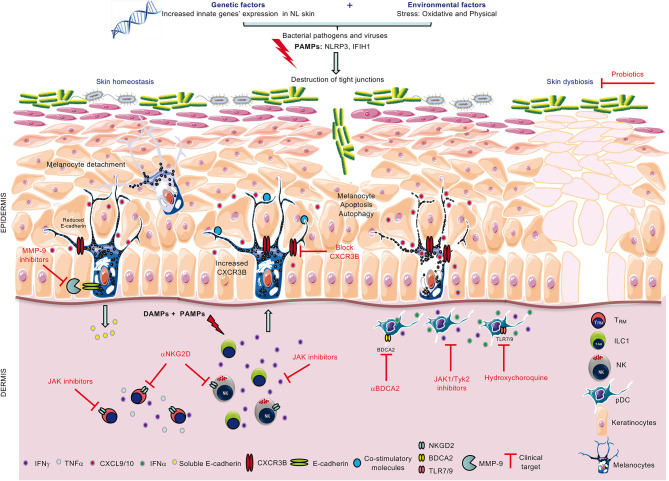Figure 1.
Role of innate immunity in loss of melanocytes and therapeutic strategies to combat the disease. Combined genetic and environmental (PAMPs) or endogenous (DAMPs) stress activates innate immune cells ILC1/NK and pDCs to increase their production of IFNγ and IFNα, respectively. In turn, IFNγ is involved in melanocyte detachment from the basal layer of the epidermis and upregulates melanocytic CXCR3B expression. In some melanocytes, CXCR3B activation induces melanocyte apoptosis which triggers increased expression of co-stimulatory molecules in other melanocytes and subsequent recruitment of cytotoxic T cells. Possible clinical therapeutic targets include the use of anti-CXCR3B (to block initial apoptosis), JAK inhibitors (to inhibit cytokine release from ILC1, pDCs and memory T cells, TRM), anti-NKG2D (to block activating NKG2D receptor on NK and TRM), anti-BDCA2 and hydroxychloroquine (to inhibit IFNα production from pDCs) and probiotics to restore skin homeostasis.

